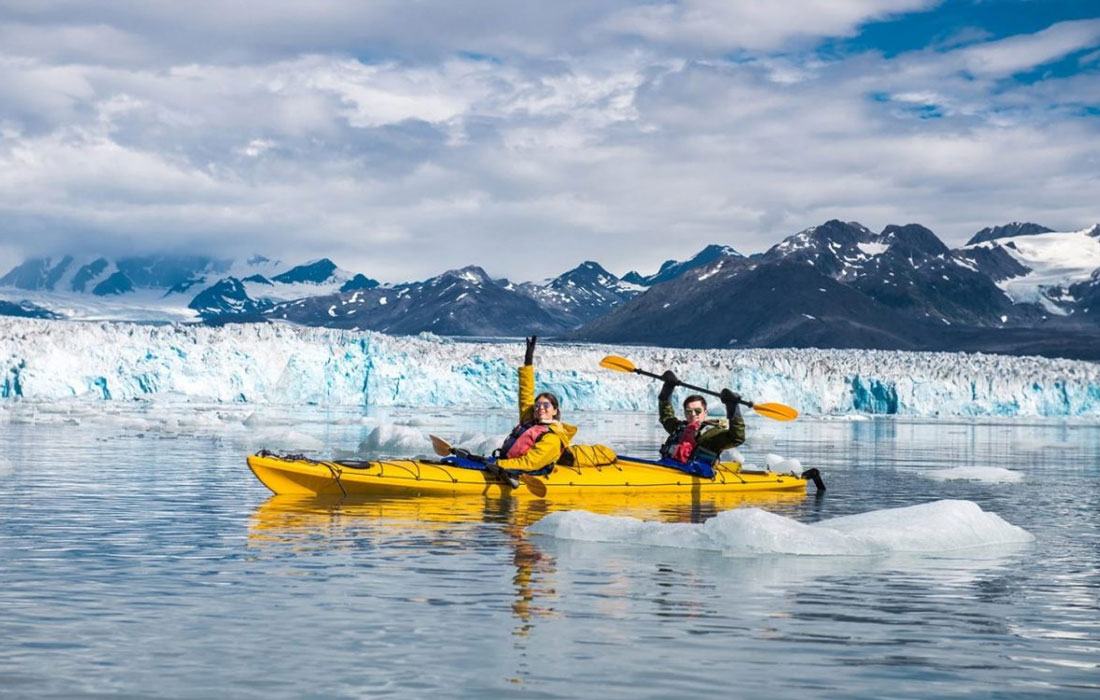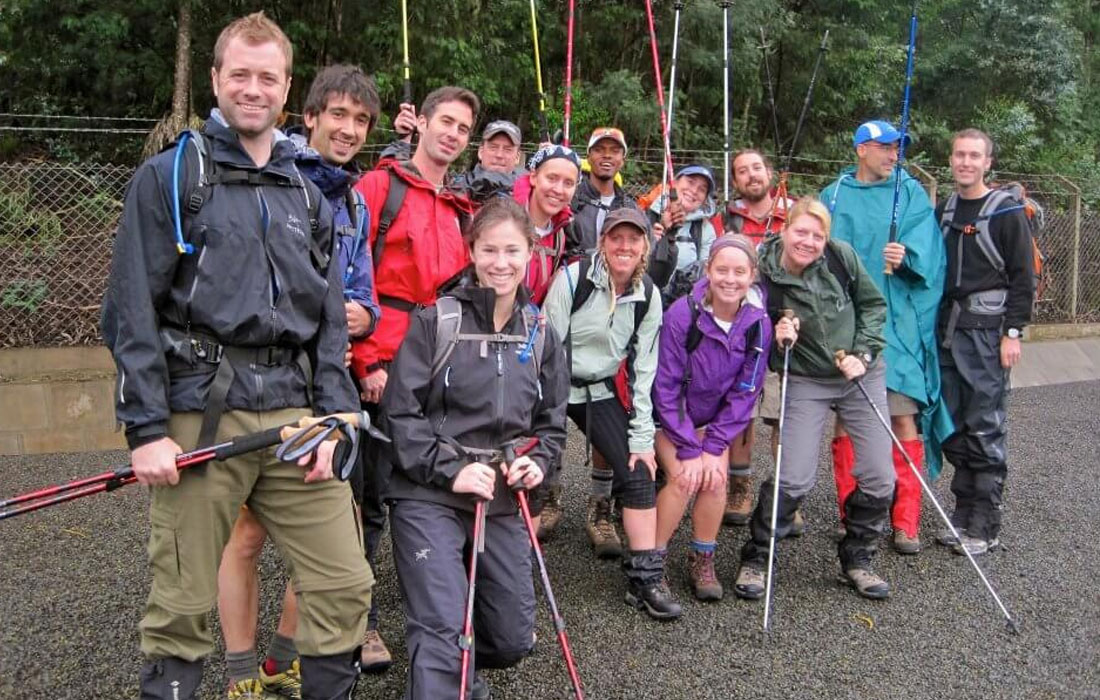Kilimanjaro Altitude Training
Are you unsure of the type of preparation you need for Kilimanjaro? Mount Kilimanjaro, a height of 19,341 feet, demands extreme mental, physical, and emotional stamina to climb.
Kilimanjaro High-altitude Hiking Techniques
Nearly 60% of climbers abandon the paths before snapping a picture at the top of Kilimanjaro due to the challenging ascent and high elevations.
So, how can you boost your chances of exploring the view from the Roof of Africa by getting the appropriate training?
Our Top 5 Techniques for Preparing for the Kilimanjaro Altitude
“If you don’t plan, you intend to fail,” said Benjamin Franklin. As a Kilimanjaro training checklist, you can use these five necessities:
Kilimanjaro Figure Out That Altitude Doesn’t Care How Great You Are
Your body may have a tougher time responding to the demanding exercise of trekking and carrying your gear since high altitude results in less oxygen being accessible. Try attempting this feat with less air, which is already challenging under ideal conditions.
If you climb the mountain too quickly, you could get acute mountain sickness (AMS), often known as altitude sickness. You’ll feel worn out and queasy, have headaches, shortness of breath, and even difficulty concentrating.
Most hikers frequently give up their ascent of Kilimanjaro due to these symptoms. Although being physically fit and having some experience climbing at high altitudes will lessen your risk of developing AMS, they do not ensure your safety.
Even the fittest hikers can have problems if they climb too quickly at high altitudes. The easiest method to prevent AMS is to exercise correctly and acclimate gradually. Because you spend more time allowing your body to acclimate to high altitude instead of battling it, a 10- to 12-day Kilimanjaro trip has a better success rate than some shorter hikes.


Kilimanjaro Be Aware That Aerobic Activity Will Prepare Your Heart And Lungs
Even simply being at the foot of Mount Kilimanjaro is like a low-impact cardio workout for your heart and lungs because of the low oxygen levels, and that’s before you even start climbing steep routes with a heavy load!
Anyone can climb Mount Kilimanjaro, but if you haven’t done any intense exercise before your expedition, you’ll tire more rapidly and find breathing difficult. We advise that you begin an aerobic or cardio workout regimen at least six months before your climb.
Your body will become accustomed to utilizing oxygen, while there is a shortage of it when you engage in aerobic exercise to meet the energy demands of your muscles. Your body will feel the same way after this exercise as it will after climbing Mount Kilimanjaro. High altitudes can make it seem like you won’t have enough oxygen to push through, similar to when you start feeling exhausted after a few challenging reps or sprints.
Cardio is very beneficial since it strengthens your lungs and cardiovascular system by pumping your heart and blood. While you’re exercising, your lungs might suffer, but they’ll appreciate it while you’re climbing Kilimanjaro.
We advise our hikers to engage in light-to-moderate intensity cardio for 30 to 60 minutes at least three times per week in preparation for the Kilimanjaro. Here are a few excellent exercises to get your heart rate up:
- Running, jogging, walking, and hiking
- Swimming
- Yoga
The month before your vacation, increase your workouts to boost your endurance.
Kilimanjaro Keep In Mind That Strength Training Is Going To Build Much-Needed Muscle
Along with cardio activities, you should perform light strength and resistance training to build the muscles in your legs, upper body, and core into powerhouses that will enable you to climb Mount Kilimanjaro.
We assure you that when you are trekking for up to 10+ hours a day, your legs will work overtime, and your upper body will perform two jobs at once by carrying your pack and equipment.
But climbing is one of many difficult things. It might be challenging to descend Mount Kilimanjaro on your hips, thighs, and knees. You could get “rubber leg syndrome,” which causes sore legs and achy joints if you don’t have the right training and form.
The muscles in your lower back, upper shoulders and stomach will improve your posture throughout the walk. But another significant advantage of keeping proper posture is that it enables your chest to open up and your lungs to take in more oxygen when you have an excellent upper body shape.
To develop your muscle strength for your hike, commit to 2-3 days of power training each week beginning at least six months before your Kilimanjaro ascent. The most excellent exercises to begin with to develop your leg muscles are:
- Inclined Leg Presses
- Leg Extensions
- Squats
- Walking Lunges
- Rear Lunges
- Standing Calf Raises
The ideal exercises to strengthen your upper body and core are as follows:
- Back and shoulder flies
- Pushups
- Pull downs with a reverse grip
- Bench Presses
- Kettlebell Swings and Rows
- Crunches
- Planks


Kilimanjaro Get Started With Your New Boots
Hiking in brand-new footwear is the most significant error you can make when ascending Kilimanjaro. Before relying on boots for a significant trip like a climb up Mount Kilimanjaro, they need to be broken in. Wearing properly broken-in shoes that have had time to mold to your footwear will provide comfort and protection against blisters and painful feet, and make sure you select suitable high-quality hiking boots.
Although practicing on hills and mountains is ideal, there are times when it is more practical to locate a treadmill where you can set a steady walking speed and adjust the slope to simulate ascending and descending sloping terrain. This allows your body to become accustomed to the weight and touch points of the daypack. Your hips, back, and shoulders will learn how to distribute the weight so that your posture remains straight and you can anticipate where chafing and pain may develop.
We always advise doing at least three long hikes lasting more than four hours before wearing new boots on the Kilimanjaro trek. Start going on 3–10-mile long hikes at least once weekly while wearing hiking boots and carrying a daypack. Even excellent are weekend day walks that last more than six hours.
Just keep in mind to avoid hard walks two to four weeks before your climb so your body can relax and recover before your exciting excursion.
Kilimanjaro Do Yoga And Meditation To Get Your Mind Ready
Even if your physical condition is excellent, climbing Kilimanjaro requires a lot of mental fortitude. You’ll sometimes want to give up your hike and head to the closest motel for a comfortable bed. It needs a calm, concentrated mind in situations like this to keep in mind why you started and to focus on your goal and the challenge.
You can start running long distances and tap into your mental reserves when the final sprint is out of sight to train your physical and mental endurance. But employing mindfulness practices in yoga and meditation is a more practical course of action.
A key benefit of using yoga in your Kilimanjaro training is that it allows your body to stretch in ways that aerobic and strength training routines do not. Additionally, your body becomes less prone to injuries and torn muscles as it grows used to stretching. After practicing yoga for a few months, you’ll also feel less stiff and weary, which will help you climb Kilimanjaro. Add a yoga routine that especially stretches and strengthens your:
Since these muscles will be working the hardest during your climb:
- Core
- Upper body like shoulders, arms, back, and chest
- Lower body like hamstrings, quads, calves, hips, and glutes
Yoga helps you control your breathing and take deeper breaths, which is essential to fending off AMS. Stretching is also a part of yoga. When you’re at a high altitude, shallow breathing or short, rapid inhales or exhales don’t supply your body with the oxygen it needs.


Kilimanjaro Things To Consider Before Training For Kilimanjaro
Making sure you’re well-rounded to manage both the physical and mental challenges of finishing the trek is the key to preparation for Kilimanjaro.
Along with being ready for your first Kilimanjaro hike, keep in mind the following:
- You can hike up and downhill for longer on multiple days straight if your legs are stronger.
- Having a fit upper body will make carrying your daypack simple.
- When your body is accustomed to exercise, hiking at a high altitude may not cause it to respond as negatively.
- Yoga and meditation are essential to avoid injuries, learn how to breathe, and develop the mental focus needed to succeed.
Kilimanjaro On The Mountains
Hear from our travelers
We team up with the best to give you an unmatchable experience.
From the mountain view to the accommodation, flight booking, and everything associated with the vacation, Good Earth Expedition had an excellent team, and we sure had the best vacation experience.
Mathew Flunum

AT GOOD EARTH EXPEDITION, WE GO WILD WORLD WIDE
From the mountain view to the accommodation, flight booking, and everything associated with the vacation, Good Earth Expedition had an excellent team, and we sure had the best vacation experience.
Mathew Flunum
The Good Earth Expedition was impressive with their destination ideas, and there were just amazing people.
Germain

PERFECTLY PLANNED AND EXECUTED BY CONSEA
The Good Earth Expedition was impressive with their destination ideas, and there were just amazing people.
Germain
From the Tanzania budget Safari to the Wildlife photography and Alaskan Wilderness, the trip was carefully planned by Good Earth Expeditions.
John Boxler

CONSEA, PROVIDED ALL THE VALUABLE INFORMATION
From the Tanzania budget Safari to the Wildlife photography and Alaskan Wilderness, the trip was carefully planned by Good Earth Expeditions.
John Boxler
Excellent trip covering several tourist sites in Northeastern Tanzania. Good hotels and accommodations, plus a friendly and competent team from Good Earth Expeditions.
Brian J Mangereli

EXCELLENT TRIP COVERING SEVERAL TOURIST
Excellent trip covering several tourist sites in Northeastern Tanzania. Good hotels and accommodations, plus a friendly and competent team from Good Earth Expeditions.
